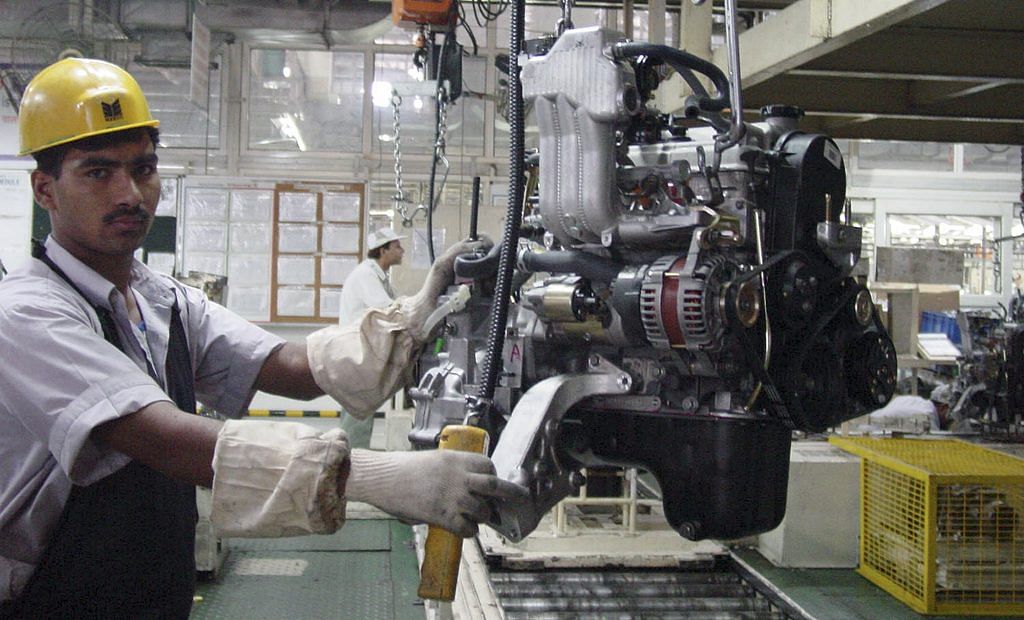The biggest job creator will be building construction and real estate, but the vast majority of those employed are likely to be on per-day work.
It is undeniable that the world is increasingly moving towards gigs, either part-time employment or smalltime entrepreneurship. The Indian government’s efforts to push self-employment by creating microenterprises by offering microloans is a pointer in this direction. Even otherwise, the NSDC’s 2016 ‘Environmental Scan’ report sees scope for creating 103 million jobs in the 2017–22 period by skilling the same number, but a lot of the skills mentioned could be gigs, or self-created small businesses.
The biggest job creator will be building construction and real estate, but barring a few contractors and key skilled personnel, the vast majority of those employed are likely to be on per-day (or per-job) work, though the contract period may be long in some cases. Or take logistics, transportation, and warehousing, which are expected to deliver 8.2 million jobs. While those working in Flipkart, Amazon India, Reliance Retail, Future Group, or Domino’s can expect some regularity in job tenure, the vast majority of workers will be on a guaranteed monthly income plus productivity bonus. Domestic work will create 3.3 million jobs, but this sector is almost entirely in the gigs segment of the economy where pay and working conditions are negotiated privately. In many cities, domestic work pays well, especially in double-income families, but one cannot say the work is formal employment.
Beauty and wellness is another category that can create jobs—8.2 million, according to the 2016 ‘Environmental Scan’ report. But while corporations like Hindustan Unilever, Marico, and others are launching beauty and wellness chains, the vast majority of employment will be created in small boutique shops with two to three employees, and will thus be driven by small entrepreneurs. As for handloom and handicrafts, despite large demand for these products both in domestic and world markets, the weaver, artisan, tailor, and craftsmen are essentially self-employed people delivering what the world wants at low prices, with the middlemen and design creators taking the cream. Nothing to complain about, given the levels of poverty in this class, but the larger point is that incomes are lower than they need to be. The arrival of e-commerce platforms like Flipkart and Amazon allows small groups of handloom and handicraft companies or proprietary enterprises to obtain better prices, but till they develop their own brand names, margins will still be small.
Nandan Nilekani made two related points in his interview to the author: life-time employment in any industry will be a thing of the past, and jobs will not be created in big units, but in small enterprises.
The important thing is job creation is going to happen at millions of small units. Twenty thousand jobs are not going to be created by Maruti in Manesar; 20,000 jobs will happen when 20,000 small units hire 1 extra person. That is the way things will happen…. More importantly, the life-time employment business is dead where you join a big bank as a probationary officer and retire as deputy MD or GM. And this is true for a lot of industries. [Given the pace of change] companies cannot also think long term.
The hopeful note is that jobs will get created, provided the government works as an enabler for small entrepreneurship. ‘We should expect a larger number of smaller entities that create jobs and a lesser number of larger entities that create jobs,’ Nilekani adds.
…
As the earth shakes under the combined onslaught of automation, globalization, and other disruptions, the gig economy will create its own losers and gainers. It is a recipe for social tension, if those who had the advantage of secure jobs earlier now see themselves as losers, while those who were left out earlier, now gain some economic traction.
Women could also gain employment in a gig economy, as they have actually been most accustomed to part-time work, while men have been programmed to be fulltime breadwinners.
You will know we have entered true gig status if a greater proportion of jobs is on contract than before; if most jobs are compensated on output norms rather that fixed monthly rates; if women enter the workforce in larger numbers, often doing work out of home; and if technology becomes the key mediator between those who want a job done and those willing to get the job done in some sectors.
The upside of gigs is that work hours and earnings can be flexible, and the idea of work–life balance can truly become the norm in many cases, except those who are at the bottom of the economic pyramid, doing a gig only to make ends meet.
On the downside, gigs can sometimes commoditize human labour in a way that even the deadbeat assembly line did not. On an assembly line, despite the monotony of work operations, you still had workers and bosses to relate to. But consider the app-based Uber driver or Amazon delivery boy, whose only contact is the app which says where he must go to earn the day’s income.
